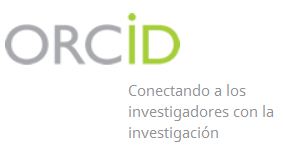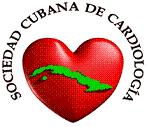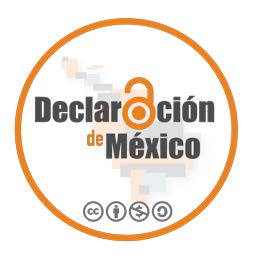Novedades de la anticoagulación en la fibrilación auricular
Texto completo:
PDFResumen
La fibrilación auricular constituye una de las arritmias más frecuente en la población mundial, con el surgimiento de nuevas alternativas terapéuticas, elegir un tratamiento anticoagulante que proporcione el mayor beneficio al paciente en ocasiones es todo un reto. Se revisaron de forma exhaustiva y automatizada los diferentes artículos relacionados con el tema, disponibles en los últimos 11 años en las bases de datos de pubmed, medline, entre otras. La búsqueda de información se clasifico, seleccionando publicaciones relevantes entre ellas las guías/directrices de práctica clínica que exponen resultados de ensayos controlados aleatorizados, comparativos no aleatorizados y opiniones de expertos, evaluando la calidad de la evidencia, realizando un análisis y finalmente la síntesis de la mismas.
Palabras clave
Referencias
Gómez D Juan. Epidemiología de la fibrilación auricular. Rev Esp Cardiol Supl. 2016; 16(A):2-7. Sociedad Española de Cardiología. UGC del Corazón, Servicio de Cardiología, Hospital Universitario Virgen de la Victoria, Málaga, España Servicio de Cardiología, Hospital Universitario Virgen del Rocío.
Kirchhof P.Guía ESC 2016 sobre el diagnóstico y tratamiento de la fibrilación auricular, desarrollada en colaboración con la EACTS. Grupo de Trabajo de la Sociedad Europea de Cardiología (ESC) para el diagnóstico y tratamiento de la fibrilación auricular Desarrollada con la colaboración especial de la European Heart Rhythm Association (EHRA) de la ESC Aprobada por la European (ESO).
Torres Z. Javier. Use of warfarin in neurology Acta Neurol Colomb 2010;26:16.
Ansell J, Hirsh J, Hylek E, Jacobson A, Crowther M and Palareti G. Pharmacology and Management of the Vitamin K Antagonists. Chest 2008; 133.
Baumgartner H. (coordinador de la ESC).Guía ESC/EACTS 2017 sobre el tratamiento de las valvulopatías Grupo de Trabajo de la Sociedad Europea de Cardiología (ESC) y la European Association for Cardio-Thoracic Surgery (EACTS) sobre el tratamiento de las valvulopatías Autores/miembros del Grupo.
Ordovas Juan P. Farmacocinética y farmacodinamia de los nuevos anticoagulantes orales. Servicio de Farmacia, Hospital General Universitario de Alicante, Alicante, España. Facultad de Farmacia, Universidad Miguel Hernández, Elche, Alicante, España. Elsevier doyma. 2009;33 (3):125-33.
Berkovits A, Mezzano D, Nuevos anticoagulantes orales: actualización. Artículo de revisión. Revista Chilena de Cardiología - Vol. 36 Número 3, Diciembre 2017.
Albadalejo G.E Guia sobre los nuevos anticoagulantes orales (Sociedad Española de hematología y hemoterapia/ Sociedad Española de trombosis y hemostasia). Hospital Clínica Barcelona. Diciembre del 2012.
January C.T. MD, PhD, FACC, Chair. Wann L.S, MD, MACC, FAHA, Vice Chair. 2019 AHA/ACC/HRS Focused Update of the 2014 AHA/ ACC/HRS Guideline for the Management of Patients With Atrial Fibrillation A Report of the American College of Cardiology/American Heart Association Task Force on Clinical Practice Guidelines and the Heart Rhythm Society. Circulation. 2019;140:e125– e151. doi: 10.1161/CIR.0000000000000665.
Sanchez V Carlos A. Puesta al día en Cardiología. 20 de Febrero de 2019- Boletín 115. Dr. Carlos Andrés Sánchez Vallejo. MD. Cardio. Bogotá, Colombia.
ACC/AHA/HRS 2014 Guideline for the Management of Patients With Atrial Fibrillation. Executive summary. Craig T. January, MD, PhD, FACC, Chair L. Samuel Wann MD, MACC, FAHA, Vice Chair.
Singer D. A New Risk Scheme to Predict Ischemic Stroke and Other Thromboembolism in Atrial Fibrillation: The ATRIA Study Stroke Risk Score.American Heart Assoc. 2013; 2:e000250 doi: 10.1161/JAHA.113.000250.
O Brien. EC. The ORBIT bleeding score: a simple bedside score to assess bleeding risk in atrial fibrillation. European Heart Journal Advance Access published September 29, 2015.
Seguel E.M. Electrofisióloga. Departamento de Cardiología. Clínica Las Condes Profesora Adjunta Facultad de Medicina, División Oriente, Universidad de Chile. Rev. Med. Clin. Condes. 2015; 26(2) 223-233.
Gregory Y.H MD Antithrombotic therapy for Atrial Fibrillation. CHEST Guideline and Expert Panel Report. November 2018. Evidence-based medicine.
Siegal D. M . Andexanet Alfa for the Reversal of Factor Xa Inhibitor Activity. The New England Journal of Medicine. December 17, 2015.
Piccini JP, Stevens SR, Lokhnygina Y, et al. Outcomes after cardioversion and atrial fibrillation ablation in patients treated with rivaroxaban and warfarin in the ROCKET AF trial. J Am Coll Cardiol. 2013;61:1998–2006.S6.
Flaker G, Lopes RD, Al-Khatib SM, et al. Efficacy and safety of apixaban in patients after cardioversion for atrial fibrillation: insights from the ARISTOTLE Trial (Apixaban for Reduction in Stroke and Other Thromboembolic Events in Atrial Fibrillation). J Am Coll Cardiol. 2014;63:1082–7.
Cappato R, Ezekowitz MD, Klein AL, et al. Rivaroxaban vs. vitamin K antagonists for cardioversion in atrial fibrillation. Eur Heart J. 2014;35:3346–55.
Goette A, Merino JL, Ezekowitz MD, et al. Edoxaban versus enoxaparin-warfarin in patients undergoing cardioversion of atrial fibrillation (ENSURE-AF): a randomised, open-label, phase 3b trial. Lancet. 2016;388:1995–2003.
Di Biase L. Use of direct oral anticoagulants in patients with atrial fibrillation and valvular heart lesions. J Am Heart Assoc. 2016;5:e002776.
Floyd CN, Ferro A. Indications for anticoagulant and antiplatelet combined therapy. BMJ. 2017;359:j3782. S4.1.1-5.
Olesen JB, Torp-Pedersen C, Hansen ML, et al. The value of the CHA2DS2-VASc score for refining stroke risk stratification in patients with atrial fibrillation with a CHADS2 score 0–1: a nationwide cohort study. Thromb2012;107:1172.
Mason PK, Lake DE, DiMarco JP, et al. Impact of the CHA2DS2-VASc score on anticoagulation recommendations for atrial fibrillation. Am J Med. 2012;125:e1.
Rivera-Caravaca JM, Roldán V, Esteve-Pastor MA, et al. Prediction of long-term net clinical outcomes using the TIMI-AF score: comparison with CHA2DS2-VASc and HAS-BLED. Am Heart J. 2018;197:27–34.
Cannon CP, Bhatt DL, Oldgren J, et al. Dual antithrombotic therapy with dabigatran after PCI in atrial fibrillation. N Engl J Med. 2017;377:1513–24.
Gibson CM, Mehran R, Bode C, et al. Prevention of bleeding in patients with atrial fibrillation undergoing PCI. N Engl J Med. 2016;375:2423–34.
Dewilde WJM, Oirbans T, Verheugt FWA, et al. Use of clopidogrel with or without aspirin in patients taking oral anticoagulant therapy and undergoing percutaneous coronary intervention: an openlabel, randomised, controlled trial. Lancet. 2013;381:1107–15.
Sarafoff N, Martischnig A, Wealer J, et al. Triple therapy with aspirin, prasugrel, and vitamin K antagonists in patients with drug-eluting stent implantation and an indication for oral anticoagulation. J Am Coll Cardiol. 2013;61:2060–6.
Lamberts M, Gislason GH, Olesen JB, et al. Oral anticoagulation and antiplatelets in atrial fibrillation patients after myocardial infarction and coronary intervention. J Am Coll Cardiol. 2013;62:981–9.
Jackson LR, Ju C, Zettler M, et al. Outcomes of patients with acute myocardial infarction undergoing percutaneous coronary intervention receiving an oral anticoagulant and dual antiplatelet therapy: a comparison of clopidogrel versus prasugrel from the TRANSLATEACS Study. J Am Coll Cardiol Intv. 2015.
Enlaces refback
- No hay ningún enlace refback.
Copyright (c) 2020 Carlos Hernan Ducuara Tovar, Alexander Valdés Martín

Esta obra está bajo una licencia de Creative Commons Reconocimiento-NoComercial 4.0 Internacional.












